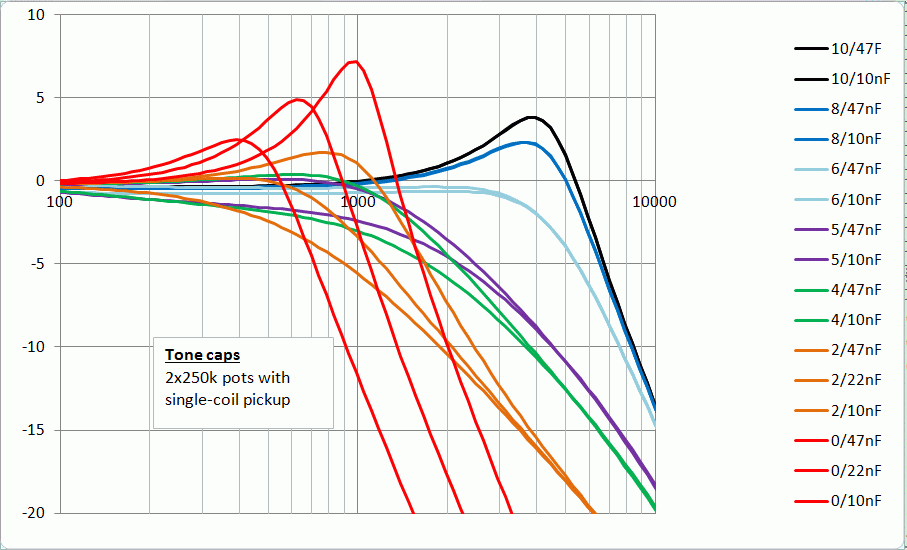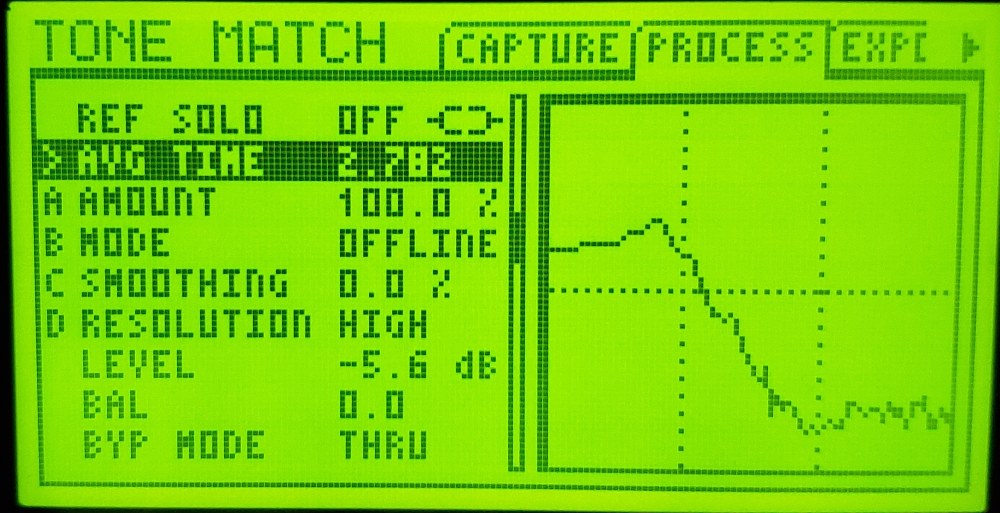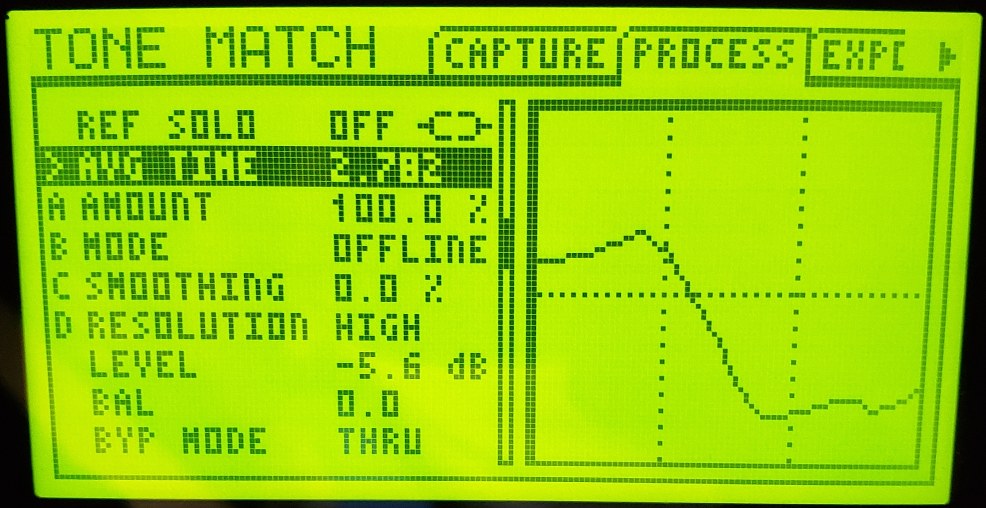Dpoirier
Fractal Fanatic
I know it's likely to be guitar-model-specific, so in my case it's a Tom Anderson drop-top on the bridge humbucker.
We play a song where I'd need to lower the tone on my guitar for a short passage, but the song's rhythm doesn't allow enough time to do it all (tone-down, play the riff, tone-up again, and resume). So ideally, I'd like to make my preset do it, controlled by an expression pedal. The thing is, rather than hunt and peck, I'd like to have a good starting point of an idea of what the frequency curve is at, say, the tone knob on half. Then it would be a simple matter of finding those curves in an EQ block and assign a controller to it. I know, use your ears and all that, but you have to admit a strating point would be nice (and my ears are shot from too much rock&roll and getting older).
I googled it, of course, but haven't found anything yet.
We play a song where I'd need to lower the tone on my guitar for a short passage, but the song's rhythm doesn't allow enough time to do it all (tone-down, play the riff, tone-up again, and resume). So ideally, I'd like to make my preset do it, controlled by an expression pedal. The thing is, rather than hunt and peck, I'd like to have a good starting point of an idea of what the frequency curve is at, say, the tone knob on half. Then it would be a simple matter of finding those curves in an EQ block and assign a controller to it. I know, use your ears and all that, but you have to admit a strating point would be nice (and my ears are shot from too much rock&roll and getting older).
I googled it, of course, but haven't found anything yet.



